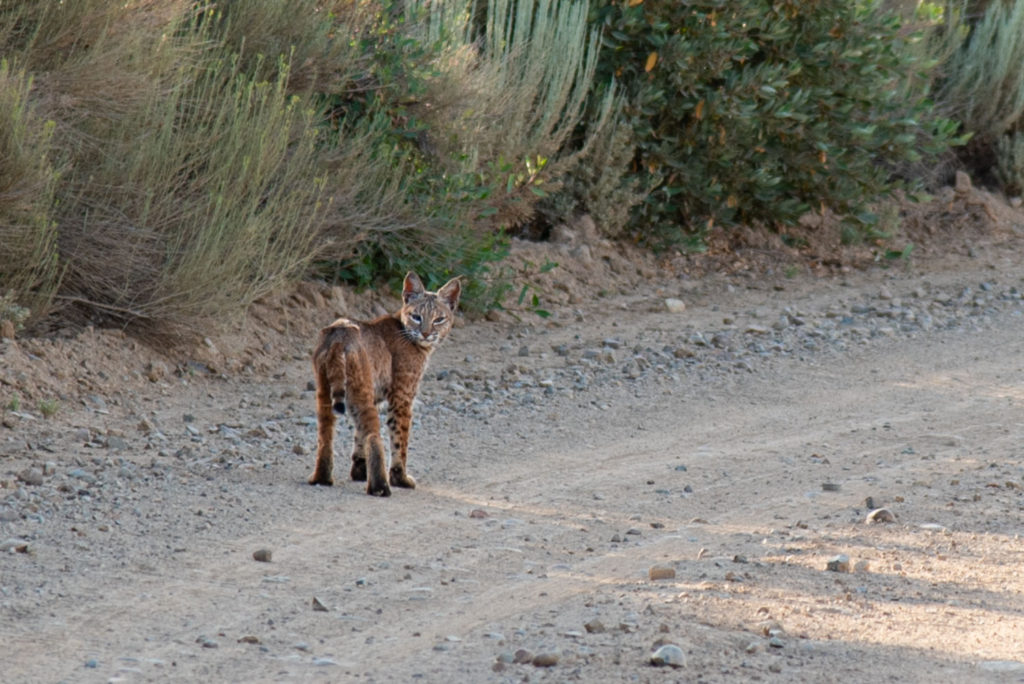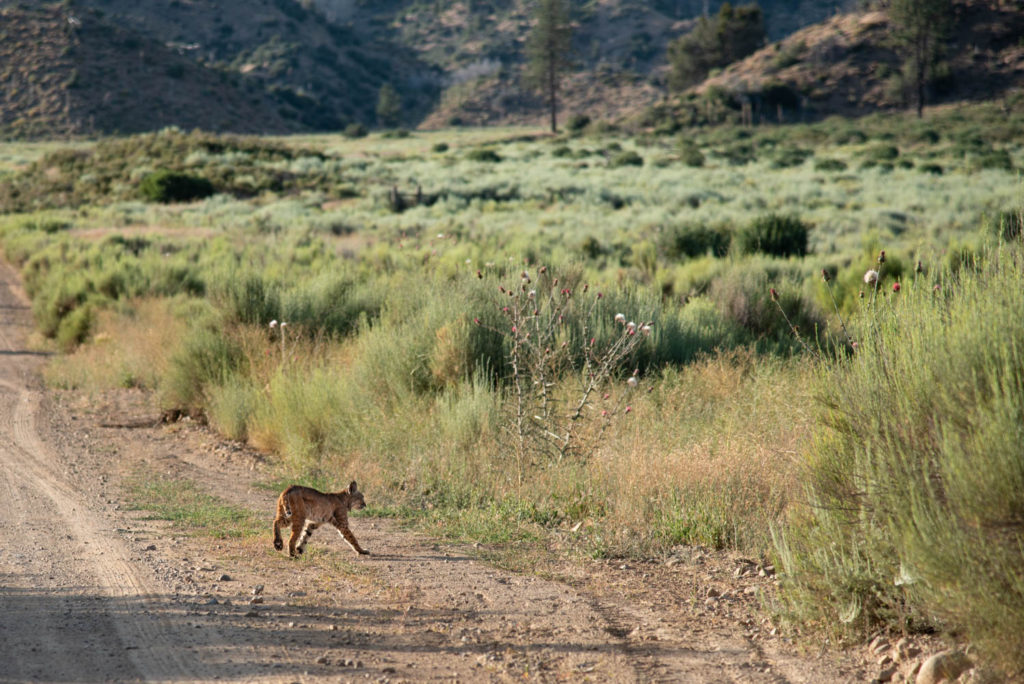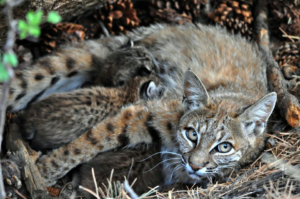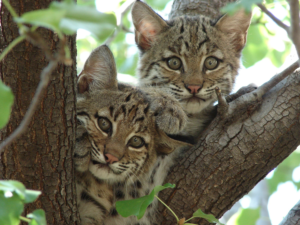Lynx rufus

Description and Habitat
The Bobcat is one of the four native wildcats to North America, having been home to the continent for over 1.8 million years. About twice the size of the average house cat, it can be distinguished based on its long legs, large paws and distinctive black-tipped tail that appear to be “bobbed” or cut off. It’s habitat ranges from southern Canada all the way down through central Mexico, including most of the contiguous United States as well as the entire Los Padres National Forest.
Biology and Behavior
Bobcats play an important role in maintaining healthy ecosystems by controlling prey populations. Known as a predator highly adaptable to both wild and urban landscapes, the bobcat prefers to inhabit environments with dense vegetative cover or steep rocky terrain. Preying primarily on rabbits and hares, they have also been known to hunt insects, chickens, waterfowl, small birds, rodents and deer. Known to be opportunistic hunters, a bobcat’s prey selection will often depend on the season, habitat location and abundance of prey. Regardless of area, bobcats are dependent on rabbits as a steady food source and often bobcat population densities will follow the cyclic densities of the small mammals in their vicinity.
Often believed to be bigger than they actually are, male adults usually only weigh an average of 21 pounds while females weigh an average of 15 pounds. Primarily nocturnal creatures, bobcats tend to avoid human encounters, especially in urban environments. Their elusiveness has made them renowned in both Native American mythology as well as the folklore of European settlers.
Within the national forests of California, male bobcats will on average have a 3 square mile territory or ‘home range’ while female bobcats will have a 1.5 square mile home range. Depending on the area and habitat, the California bobcats’ range has even been noted to extend up to 25 square miles! As solitary animals, bobcats tend to be extremely territorial and often only come into close proximity with one another during the breeding season which takes place from early winter into spring. In southern California, the mating season generally runs from early December to late February. During this time, males will often mate with 2 to 3 females whose home ranges overlap his own. Although a pair’s meeting only lasts a few days, during this time they will travel, hunt and eat together.
Once pregnant a female bobcat will have a gestation period of about 8 to 10 weeks, after which a litter of 2 to 4 kittens will be born. The female will give birth to her kittens in a den she has found where she believes her young will be safe from predators. Often, den sites are abandoned wood rat nests although sometimes the mother prepares a small-enclosed area nestled between thick covers of vegetation. In urban environments it has even been found that pregnant female bobcats will choose the backyards of residential areas as den sites.
Up until the kittens are two months of age, they will be completely dependent on their mother for sustenance. During this time, the female bobcat will rarely leave the den, doing so only to feed herself and to be able to provide energy for her young. At around two months the kittens begin eating solid food and their mother will start to bring back entire prey animals as the litter begins to require more nourishment to survive. The kittens learn to hunt at 5 months of age and by the time they are between 8 to 11 months old; they are evicted from their mother’s territory and begin to live a life of their own. Both male and female bobcats can reproduce by the time they reach the age of 2 and can live up to 13 years of age in the wild.
Threats and Conservation
Currently the bobcat is listed as a “Least Concern” species by the International Union for Conservation of Nature (IUCN) and is not under any form of federal or state protection within California.
In 2013, the California Fish and Game Commission—in partnership with the state legislature—successfully created a measure to ban any and all commercial trapping or trading of bobcat. However, it is still legal to hunt bobcats within California so long as one possesses a hunting license and has purchased the necessary tags. Landowners can also kill them if they’ve had issues with livestock losses, although one must first apply for a permit that limits them to one troublesome bobcat within a 20-day period and 1-mile radius around the property. By law California bobcat hunters are banned from using any part of the animal either personally or commercially, therefore requiring them to leave it where it was killed or dispose of it. This has been a controversial measure due to what may be considered a wasteful consolation in the event of taking an animal.
Fortunately, the number of bobcats killed annually has been steadily decreasing each year as reported by the California Department of Fish and Wildlife. Currently, habitat destruction due to the ever-expanding human population is the largest limiting factor to their population sizes. In North America, human encroachment into national forests and habitat fragmentation has limited the natural range of the bobcat and reduced the sizes of their average home range. Ultimately, the bobcat is an extremely adaptable creature capable of thriving in a broad range of different environments and as such should be revered for their ability to adapt, survive and overcome.

The best time to see bobcats within the Los Padres National Forest or on the Carrizo Plain is during the first two hours of sunlight and the last two hours before dark. Bobcat activity will be higher during daylight hours in the cooler months from late autumn to early spring. Look for them in areas with dense vegetative cover and active rabbit populations. Tracks can also be found along dry creek beds. If you happen to live in a rural area perhaps the best place to see a bobcat is in your own backyard or neighborhood!









